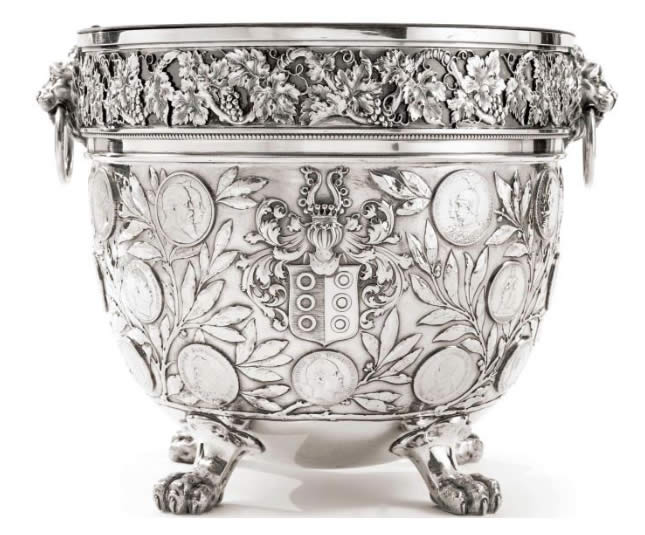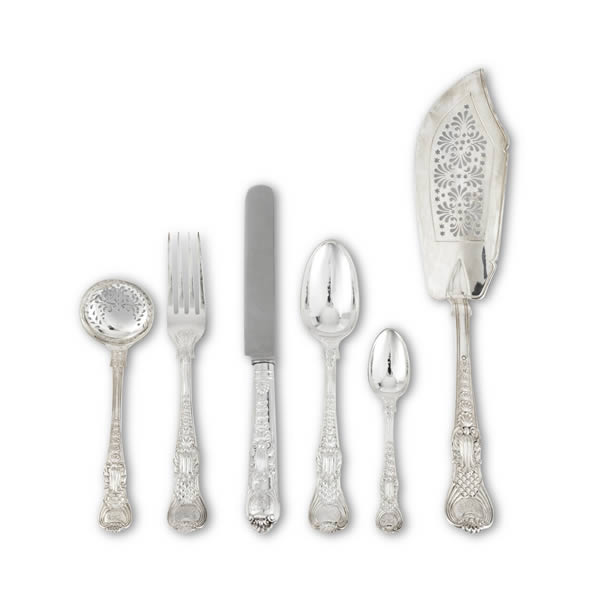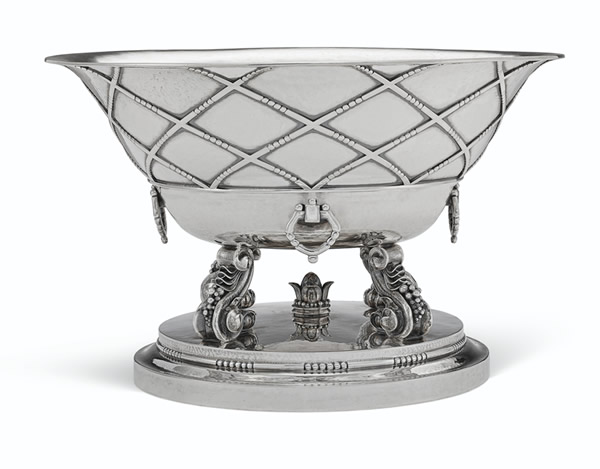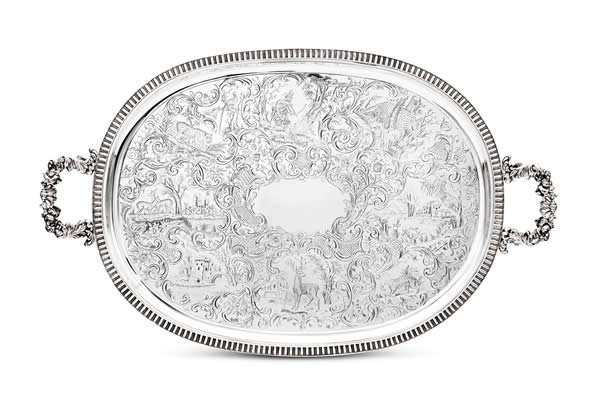Why Collect Silver?
Silver can be a daily essential
There are numerous methods for curating art collections. For many, art pieces play a significant role in the overall aesthetic of their home, enhancing spaces while providing the joys of acquisition and ownership. Personally, I take pleasure in collecting silver for practical use in daily life, such as a set of silver tumblers I commissioned with gilded interiors that allow wine to be enjoyed from them, and a table service of cutlery in the Old English pattern. Such items can serve as a foundation for a collection that is both functional and decorative.

Use silver to create the atmosphere
From contemporary tables to elaborate centrepieces Silver has historically been integral to table decor for dinners and banquets. Modern collectors tend to use silver to craft elegantly set contemporary tables adorned with one or two thoughtfully selected pieces paired with modern accents, or to replicate the aesthetics of the 18th and 19th centuries with elaborate centrepieces, tureens, and candlesticks, often adorned with fruits and flowers. At the highest end of the spectrum are the magnificent royal and aristocratic pieces, alongside impressive exhibition items.
Begin with silver flatware
When you're outfitting a dining table, your initial focus should be on knives, forks, and spoons. Condition is critically important. Heavily-worn 18th-century silver may be too delicate, while 19th and early 20th-century services in popular patterns like Old English, Fiddle, and King’s are more practical. Scarcer patterns attract some collectors but can be challenging and costly to acquire if you later choose to expand the service.

Make an impression with silver candlesticks and candelabras
No dinner table is complete without candlesticks — Candlesticks crafted by regional English silversmiths in Birmingham and Sheffield are more affordable. Candelabra that can be utilised with or without their branches represent a versatile choice — prices for 18th-century pairs begin at approximately £5,000.

Incorporate accessories
Enhancing candlesticks with a centrepiece, like a basket or tureen, would finalize the foundational structure of your table setting. Following this, you could then include salt cellars, mustard pots, and pepper shakers. A more opulent room might call for pairs of wine coolers, large platters, or soup tureens on the sideboards. Country-house collections typically consist of vessels from various eras and styles, so no specific period or design needs to be strictly followed.

How to combat silver tarnish
It’s the one inevitable question: cleaning. In truth, maintaining silver is simpler and much more straightforward than most realise. Quality polishes, such as Goddard’s silver foam or Hagerty silver cleaner, eliminate tarnish with minimal abrasion and contain inhibitors that help prevent new tarnish from forming. If the silver is not on display, it's advisable to store it in as airtight an environment as possible, kept away from moisture in baize bags that will also help prevent dents, dings, and scratches. In many respects, silver, much like fine porcelain and glass, is best washed by hand.

Why Consider Silverware Restoration?
- Preserving Sentimental Value: Many silverware pieces are family heirlooms or gifts that hold sentimental value. Restoring these items ensures that they can be passed down through generations in pristine condition, preserving their sentimental and historical significance.
- Enhancing Aesthetic Appeal: Silverware restoration brings back the shine and beauty of your silver items, enhancing their visual appeal. Restored silver can become the centerpiece of your dining table or home décor once again.
- Increasing Value: For antique or rare silverware, proper restoration can increase or preserve the value of the item. Restoring a tarnished or damaged piece of silver can help retain its investment value, especially for collectors or investors.
- Eco-Friendly Option: Rather than discarding old or damaged silverware, restoration allows you to recycle and reuse valuable pieces, making it an environmentally friendly alternative to buying new items.
- Functionality: Beyond aesthetics, restoration ensures that your silverware remains fully functional. Broken handles, dents, or cracks can compromise the usability of the item, but with restoration, your silverware can once again be used for special occasions or daily use.
Tips for Caring for Restored Silverware
Once your silverware has been restored, it’s important to take proper care of it to maintain its beauty. Here are a few tips:
- Regular Cleaning: Gently clean your silverware after each use to remove fingerprints and food residue. Use a soft cloth or mild soap and water, and dry thoroughly to prevent water spots.
- Store Properly: Store your silverware in a dry, cool place to prevent tarnishing. You can use anti-tarnish cloths or bags to protect items from exposure to air and moisture.
- Avoid Abrasive Materials: When polishing, avoid using abrasive cloths or cleaning products that could scratch the surface of the silver. Stick to soft, non-abrasive materials.
- Professional Maintenance: For heavily used or valuable pieces, consider having your silverware professionally cleaned and maintained periodically.
